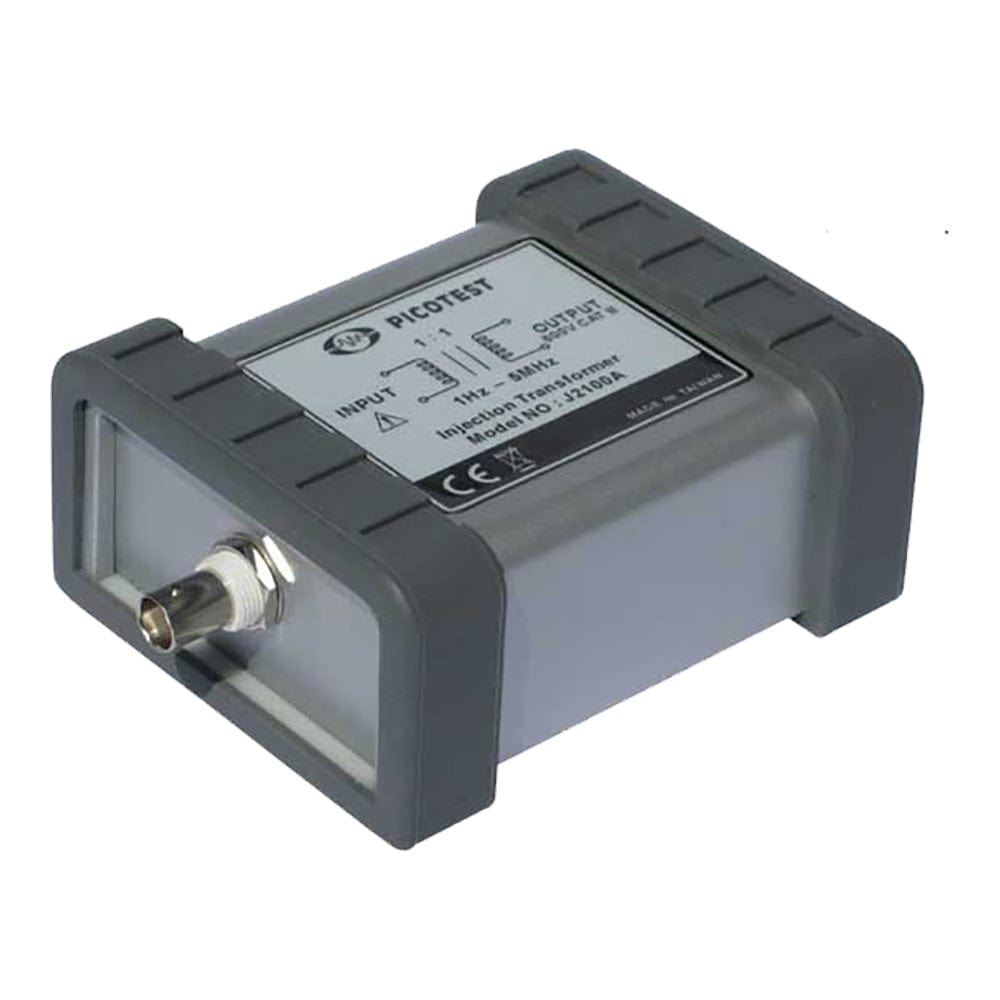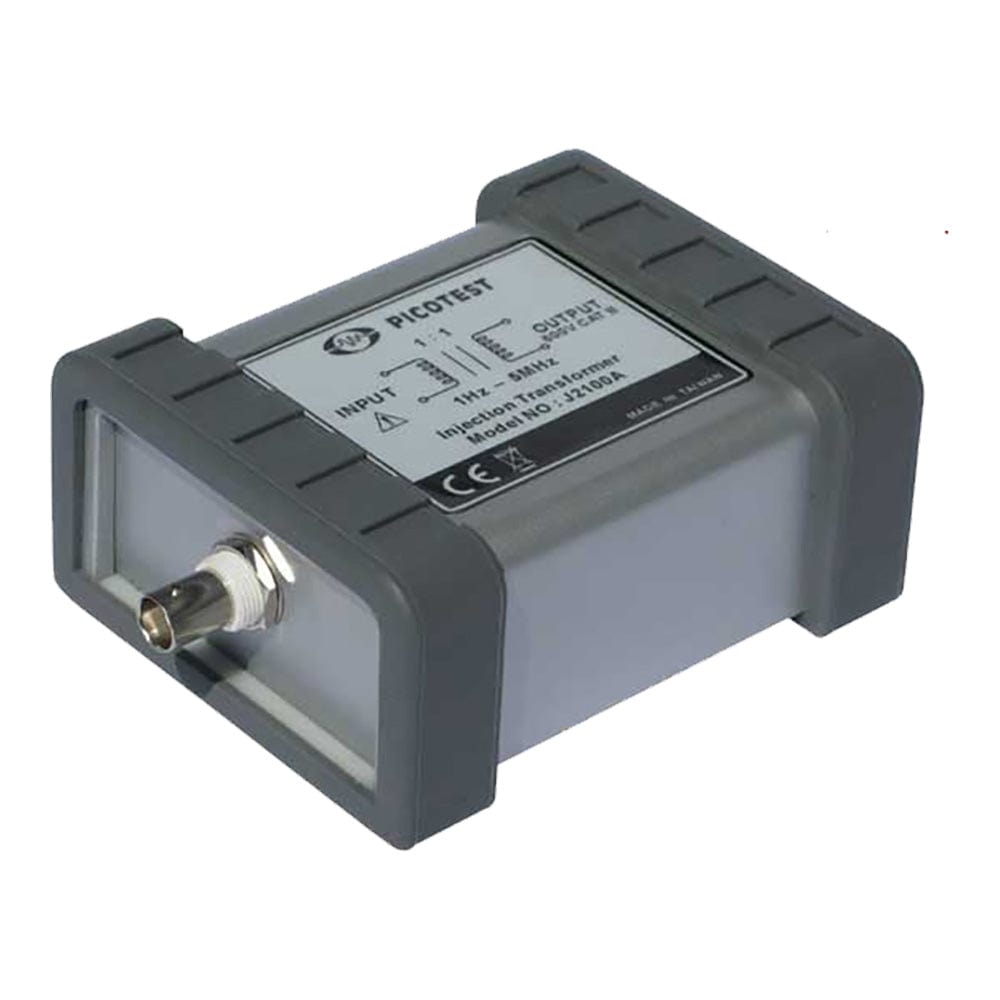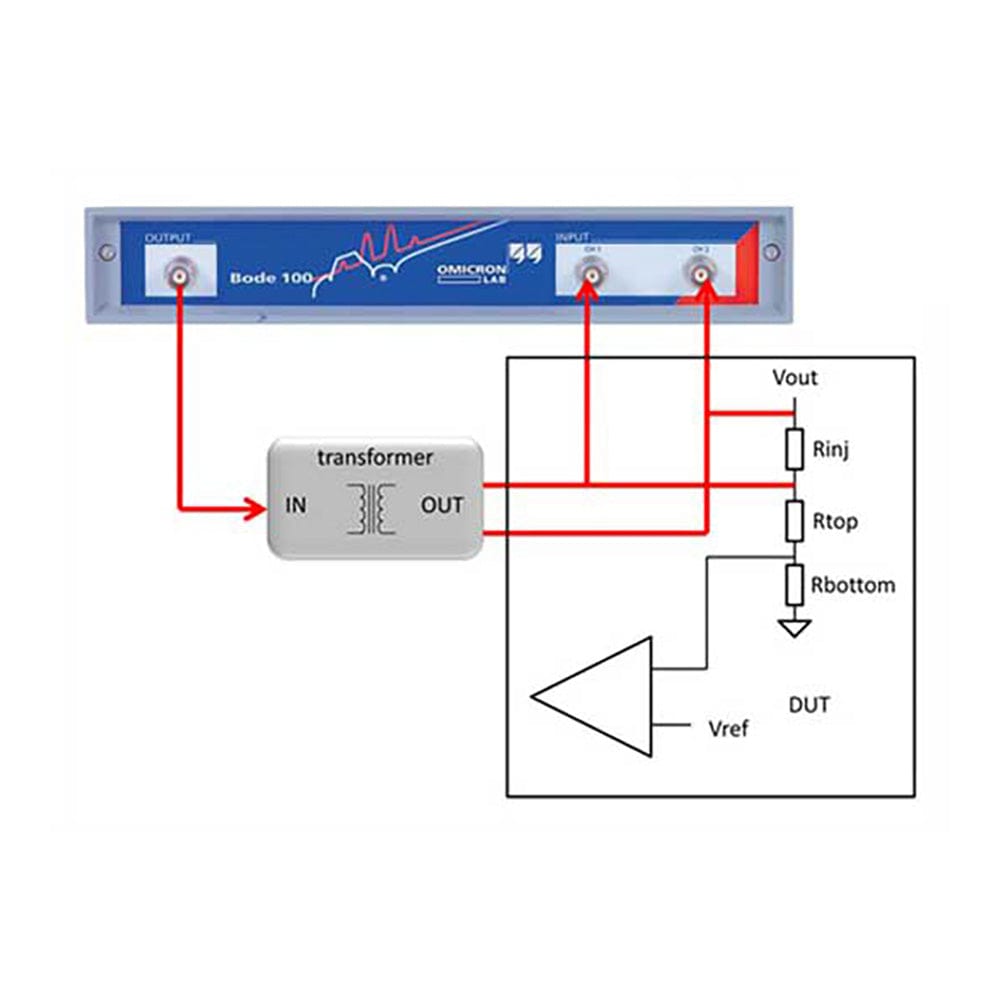

Key Features
Overview
Overview
The Picotest J2101A Wideband Injection Transformer (SKU: J2101A) enables safe and precise injection of test signals into the control loops of DC-DC converters and power supply systems, making it invaluable for stability, gain, and phase margin measurements. Spanning a frequency range from 10Hz to 45MHz and supporting off-line power supplies, the J2101A suits both low- and high-frequency power integrity testing scenarios.
Application
Primarily used for Bode plot and loop response analysis, the J2101A provides a low-distortion, galvanically isolated signal path between a network analyzer and the device under test. Its 1:1 ratio, 600V isolation voltage, and robust 5 Ohm termination assure compatibility with most analyzers and power electronics, including power factor correctors (PFCs), switching regulators, and LDOs.
Product Range
The J2101A forms part of Picotest’s comprehensive injector family. Consider the J2100A for ultra-low frequency needs, or the J2110A Solid State Injector for DC to 45MHz bandwidth with ultra-low noise and higher precision.
Why Choose J2101A?
Its unmatched balance of wide bandwidth, robust isolation, and low distortion ensures reliable performance and minimal impact on the circuit. Engineers who require accurate, repeatable measurement of control loop stability in modern high-speed designs consistently value the J2101A.
Downloads
Why Engineers Choose The Transformateur d'injection à large bande Picotest J2101A
Precision Stability Analysis
Versatile Frequency Coverage
Safety and Ease of Use
Le Picotest J2101A est utilisé pour injecter un signal, normalement dans une boucle de régulation, afin de mesurer la stabilité des convertisseurs DC-DC. Il a été conçu avec une bande passante de 10 Hz à 45 MHz et est fréquemment utilisé avec un analyseur de réseau vectoriel.
Picotest propose deux transformateurs d'injection différents, spécialement optimisés pour différentes applications. Tous deux sont fabriqués avec des matériaux supérieurs à la plupart des autres transformateurs d'injection, ce qui se traduit par une bande passante, une durabilité et des performances globales considérablement améliorées. La bande passante utilisable des transformateurs d'injection Picotest est supérieure aux limites de fréquence de 3 dB.
Frequently Asked Questions
Have a Question?
-
What’s the recommended alternative for ultra-low frequency injection?
The Picotest J2100A is suited for frequencies as low as 1Hz.
-
What is the maximum DC current rating?
The J2101A supports up to 10mA DC current before inductance drops 10%.
-
Are there solid-state options in the Picotest range?
The J2110A Solid State Injector provides DC–45MHz bandwidth and is suitable for ultra-low noise applications.
-
What’s the benefit of 1:1 transformer ratio?
Ensures that injected signals are neither amplified nor attenuated, supporting precision measurements.
-
Is the J2101A compatible with all network analyzers?
Yes, it integrates seamlessly with most mainstream network and impedance analyzers.
-
Can the J2101A be left permanently in-circuit?
Its low termination value allows it to remain in-circuit during normal operation without affecting the output voltage.
-
How does the J2101A compare to Picotest’s J2100A?
The J2100A covers lower frequencies down to 1Hz; the J2101A spans higher frequencies up to 45MHz for faster regulators.
-
What terminations are recommended for the J2101A?
The transformer is optimised for 50 Ohm termination but is compatible with most standard 50 Ohm analyzers.
-
Can the J2101A be used for offline power supply stability testing?
Yes, with its 600V isolation, it is suitable for high-voltage and offline PSU applications.
-
What is the frequency range of the Picotest J2101A Injection Transformer?
The J2101A operates from 10Hz to 45MHz, supporting a broad range for DC-DC converter and regulator measurements.


